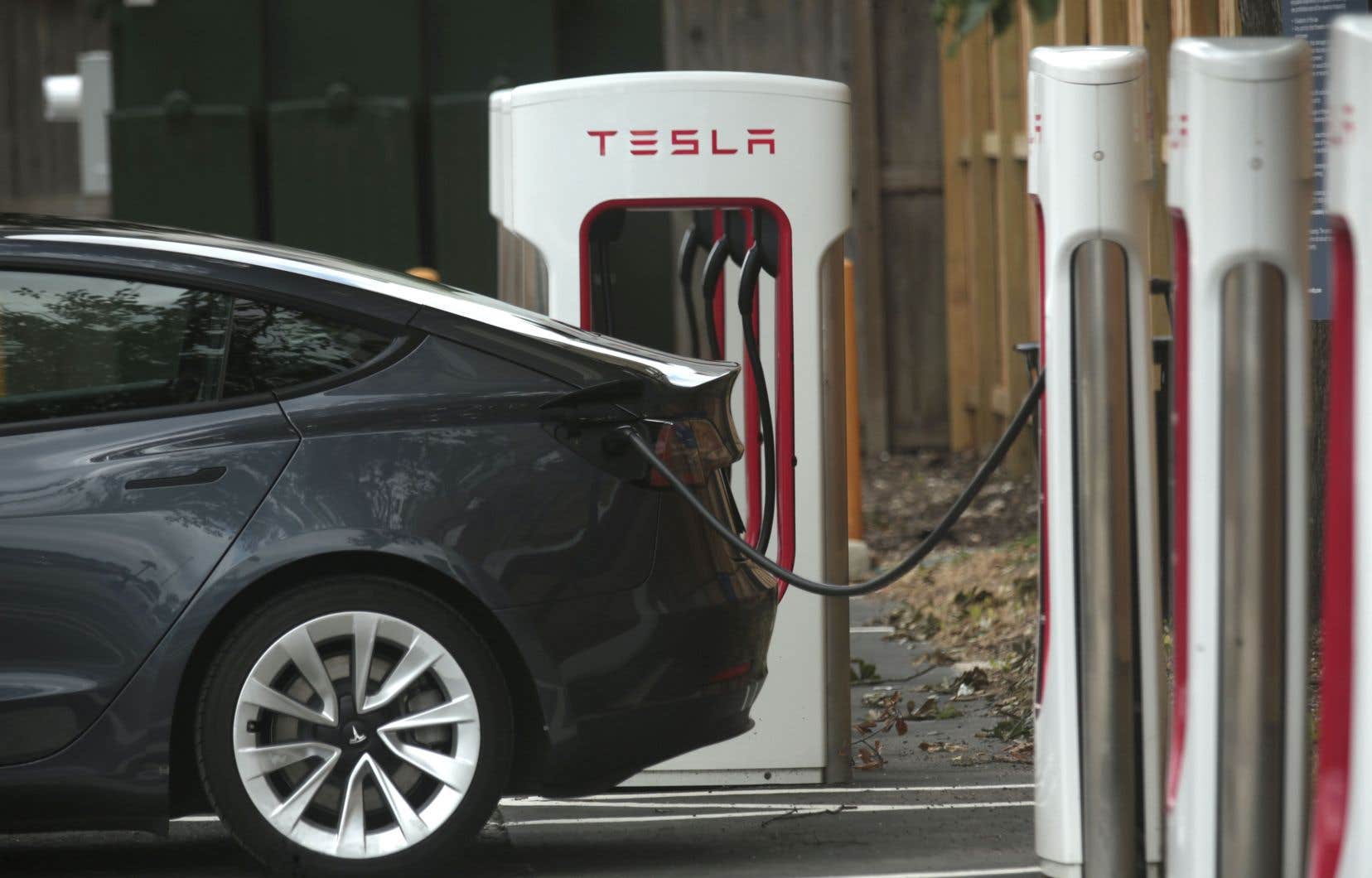US carmaker Tesla has adjusted the release date of its new models, including cheaper vehicles, to the first half of 2025 after a drop in its net profit in the second quarter.
In a context of low prices and increased competition from traditional manufacturers, the electric vehicle specialist saw its net profit fall by 45% between April and June, to 1.48 billion dollars.
Reported per share and excluding exceptional items – the reference for the markets – it comes to 52 cents while the consensus of Factset analysts was expecting 61 cents.
Revenue rose 2% to $25.50 billion between April and June, slightly better than the consensus estimate of $24.34 billion.
The group surprised at the beginning of July by announcing quarterly vehicle sales that exceeded market expectations: 443,956 units delivered worldwide between April and June (436,000 expected). At the same time, it produced 410,831 vehicles.
Without giving a figure, Tesla said on Tuesday that its futuristic Cybertruck pickup, deliveries of which began in late 2023, had “become the best-selling electric pickup in the United States in the second quarter.”
Current production capacity is less than 125,000 Cybertrucks per year at the Texas plant, but it has tripled quarter over quarter.
It should be profitable by the end of the year, Tesla assured, noting that customs tariffs on certain raw materials and finished products had an impact on production costs.
But excluding Cybertruck, “the cost per vehicle was down” from the first quarter, Chief Financial Officer Vaibhav Taneja said on a conference call with analysts.
Costs and new models
Tesla also said its priorities remain cost cutting across the group — which has cut thousands of jobs in recent months — growing traditional businesses and accelerating the development of products and services infused with artificial intelligence.
It also brought forward by a few months the release date of its new models, including cheaper vehicles, to the first half of 2025, instead of the second half of that year.
During the audio conference, the manufacturer’s boss Elon Musk preferred to keep the details on these vehicles to the forefront of ad hoc presentations, without giving a timetable.
But they will be produced on the same lines as the current lineup, Tesla said, adding that production of its Semi truck remained on track to start by the end of 2025.
Concerning roadster (sports car), which Elon Musk had announced in February for a launch in late 2024, production should ultimately begin “next year,” he told analysts.
Its giant plant near Berlin began production of right-hand drive vehicles in the second quarter, with first deliveries already taking place in the UK.
Robotaxi presented in October
The deployment of its robotaxi, a driverless vehicle, depends on “technological advancement and regulatory approvals”, but “we are working vigorously on this opportunity with enormous value potential”, the group noted.
The robotaxi was supposed to be presented on August 8, but the schedule was pushed back because of “a major design change at the front, and the extra time allows us to reveal a few other little things,” Elon Musk explained a few days ago.
Pushing the timeline back “a few months allowed us to improve the robotaxi as well as add a few other elements,” he confirmed Tuesday during the audio conference, announcing that the presentation date was now set for October 10.
Asked about this timetable, Elon Musk admitted to being sometimes “excessively optimistic” while saying “he would be very shocked if (Tesla) can’t do it next year”. He had at one time mentioned a launch before 2018.
The project to build a giant factory in Mexico, announced in March 2023 with an investment of five billion dollars, has since been suspended. And should remain so at least until the presidential election in November.
Donald Trump “said he would increase tariffs on vehicles made in Mexico,” noted Elon Musk, who made official his full support for the Republican candidate for the White House immediately after the recent assassination attempt against the former president.
“Therefore, it does not make sense to invest heavily in Mexico. […] “We’ll see how things go politically,” Musk said. In the meantime, “we are increasing the capacity of our existing factories significantly.”
